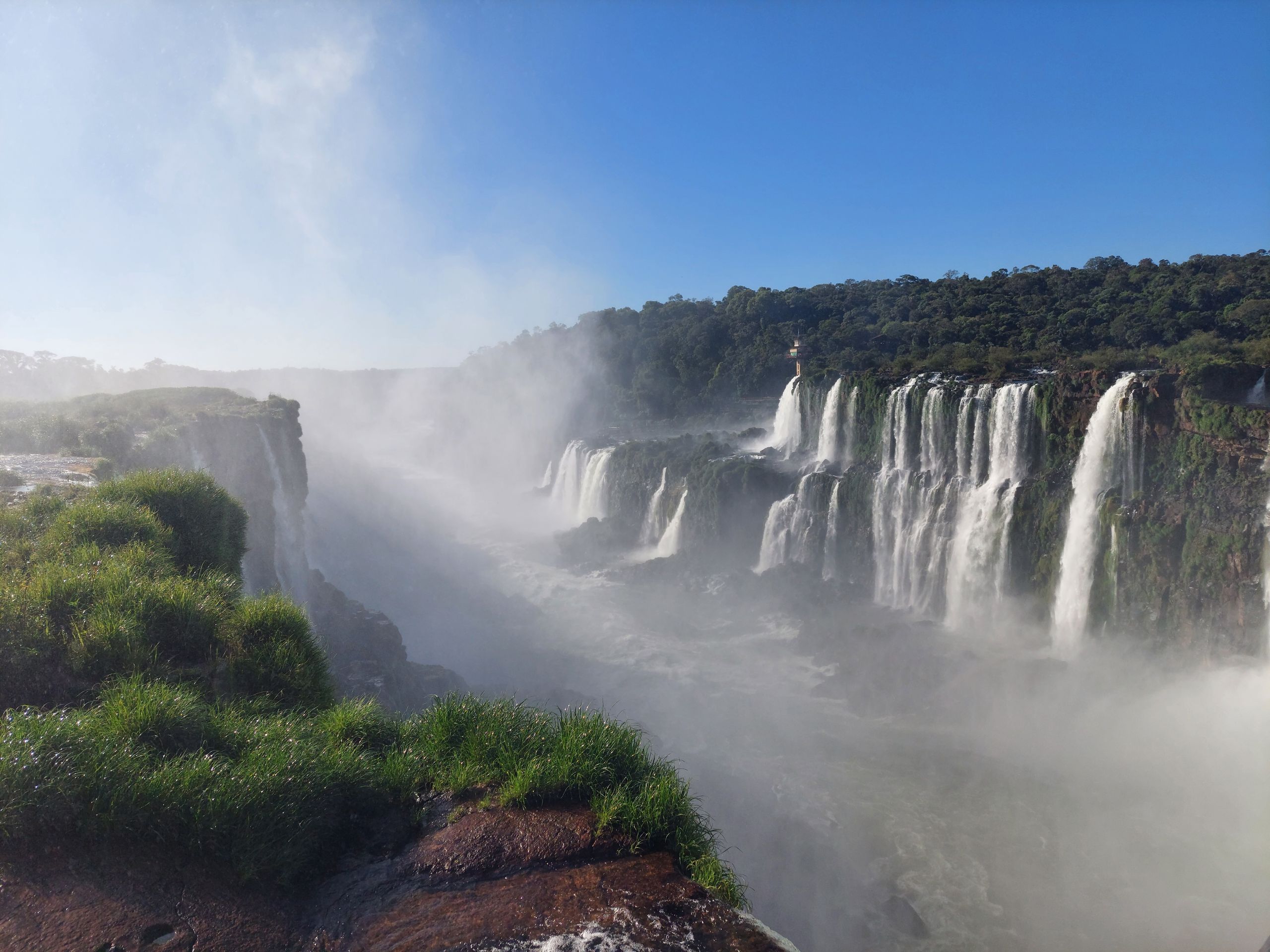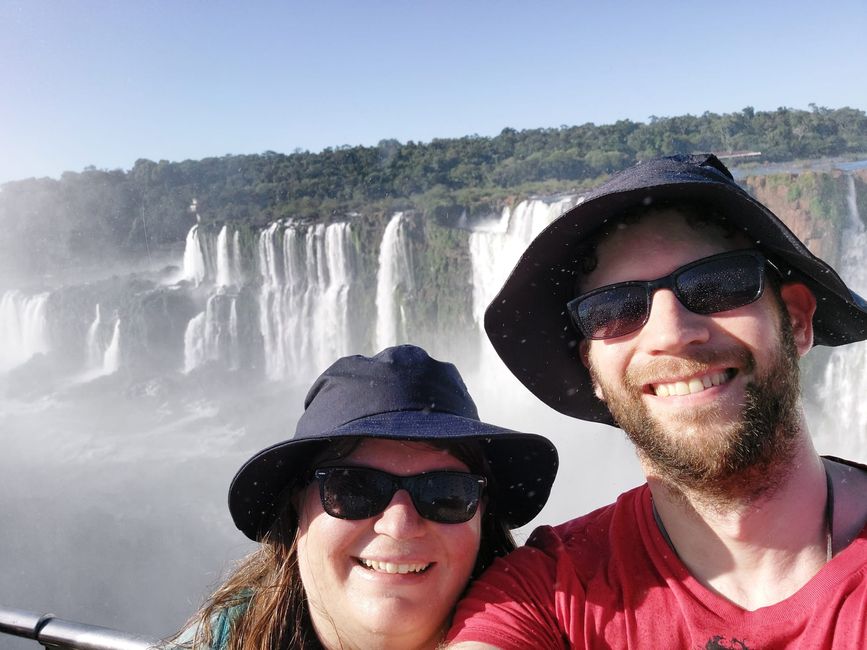Uyuni, La Paz, interim end
Wotae: 08.06.2023
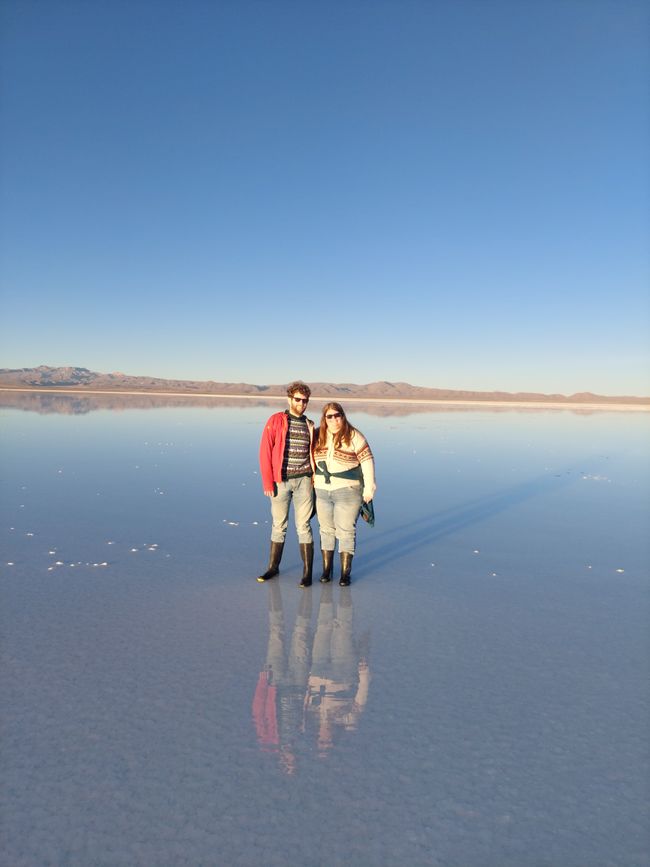
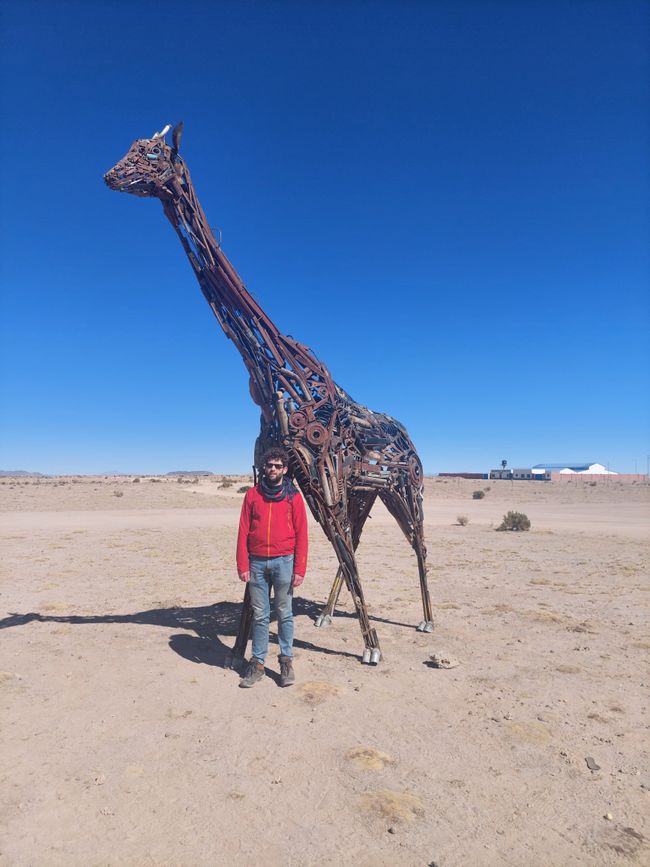
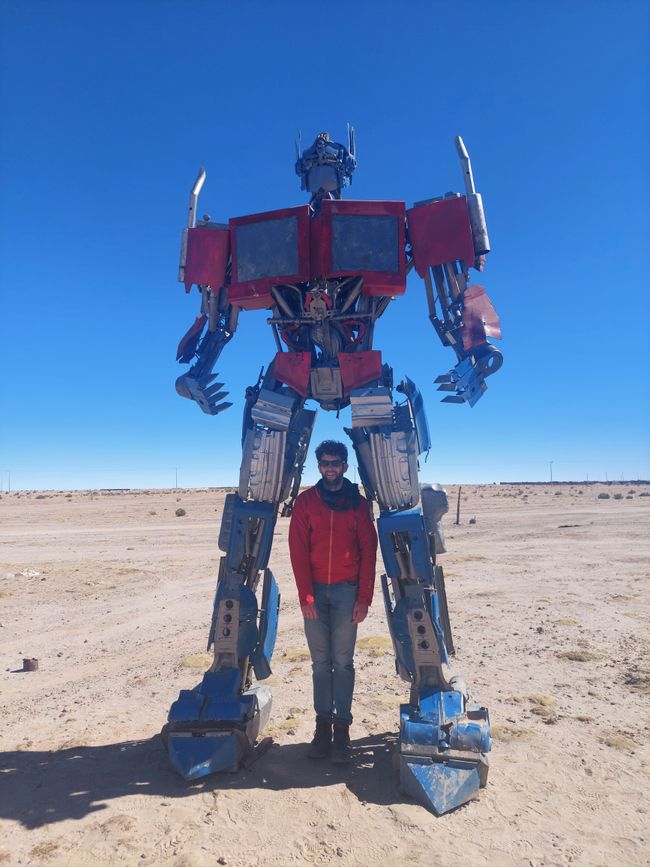
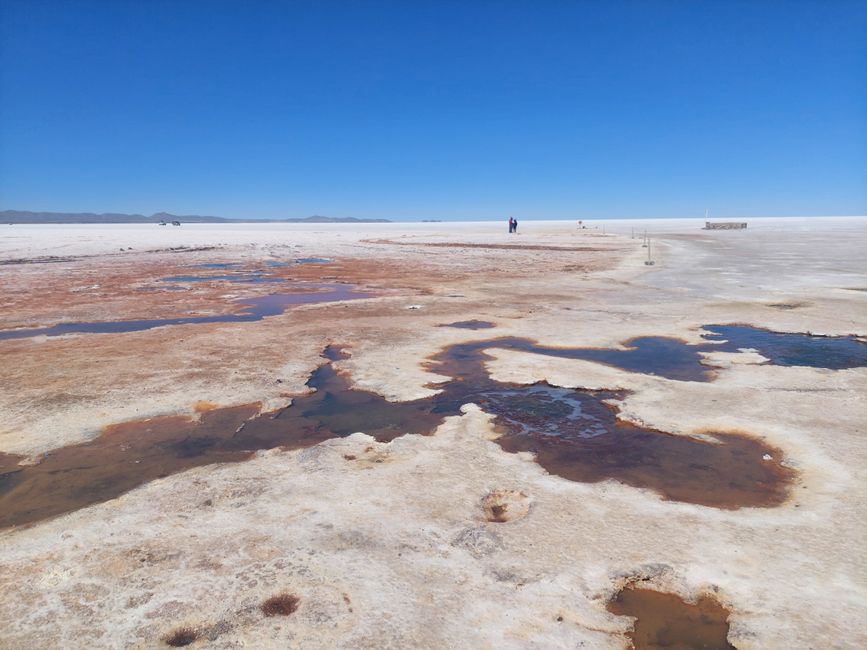
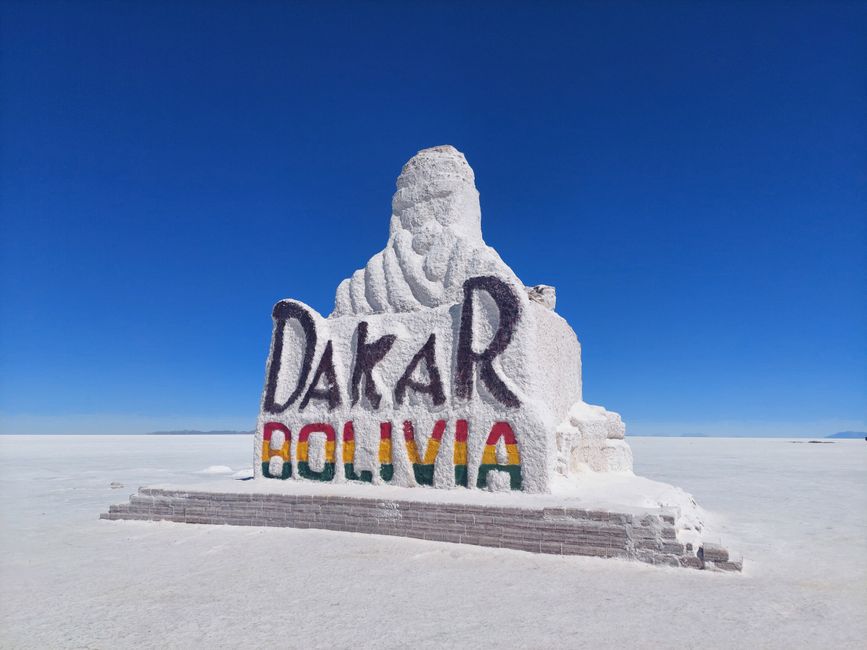
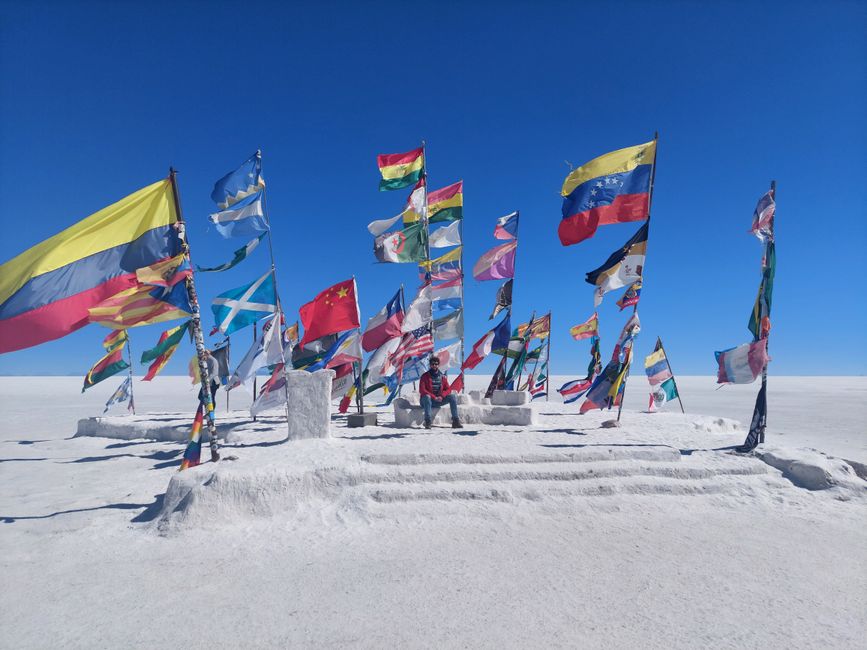
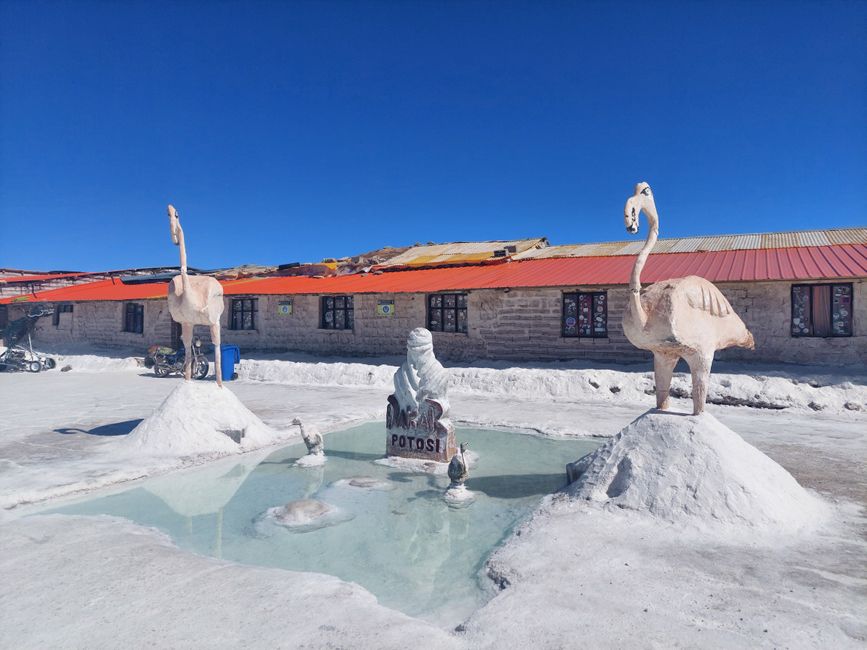
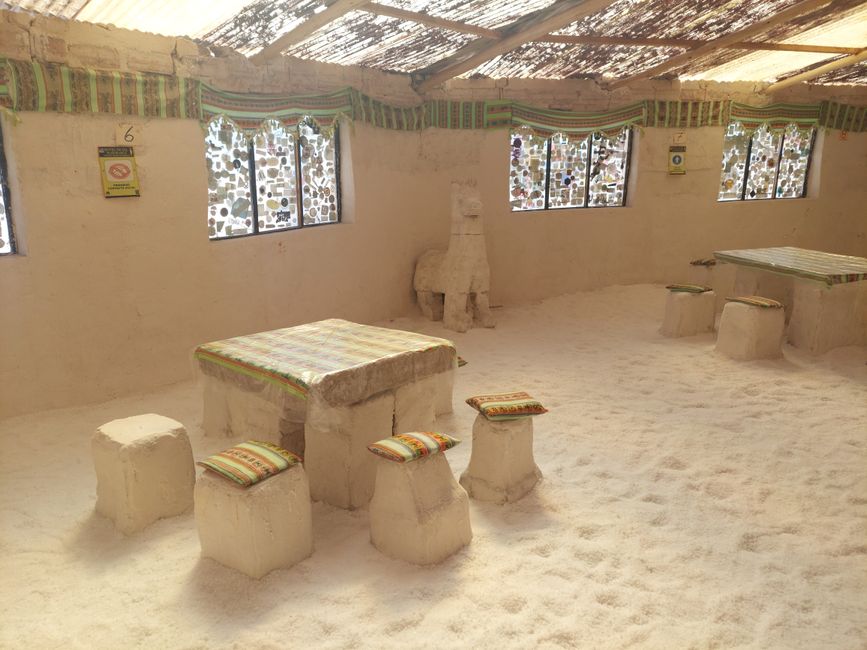
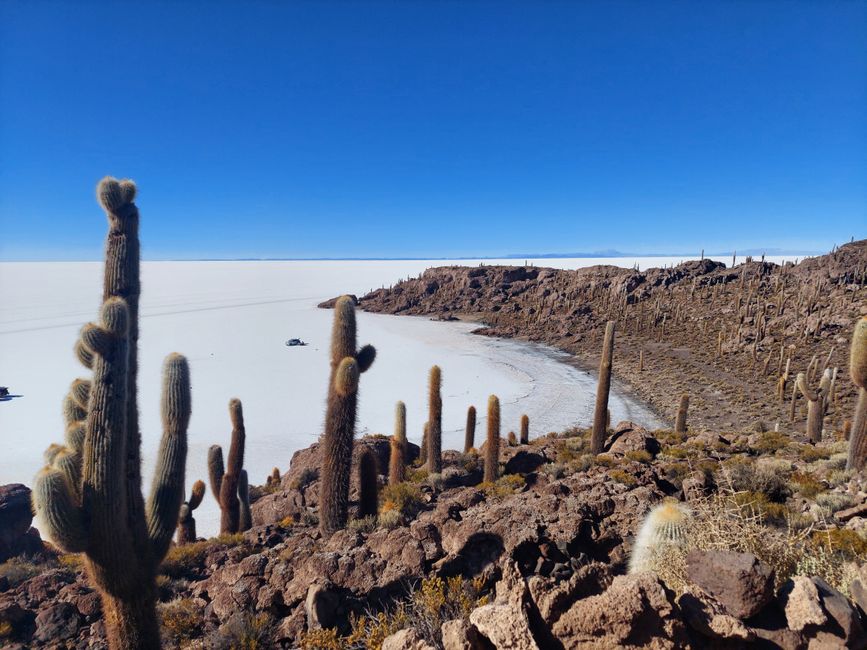
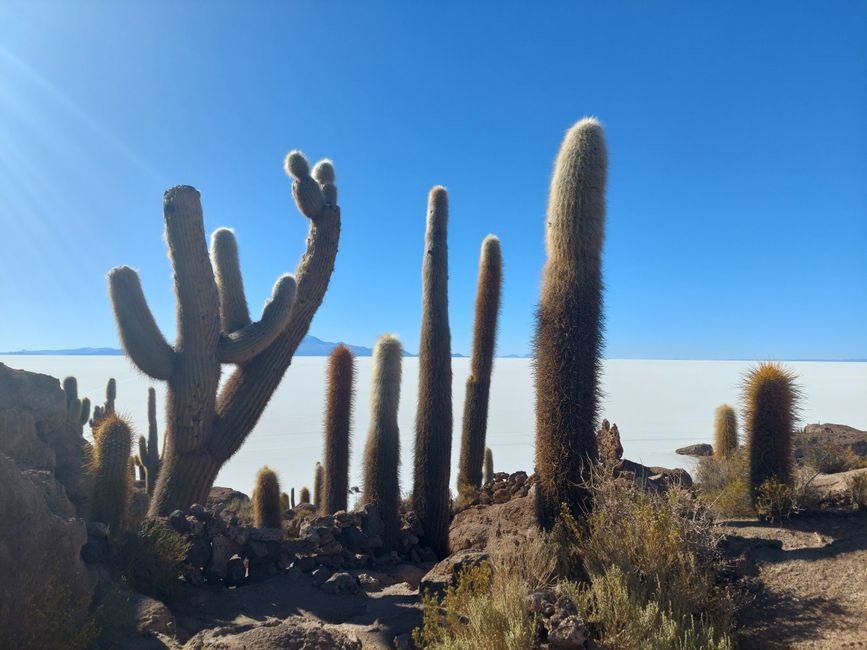
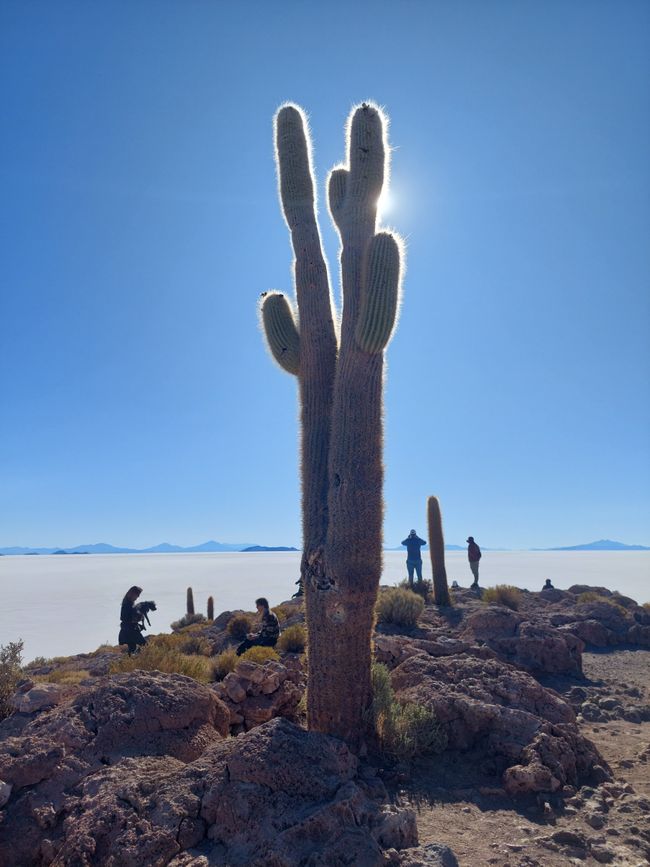
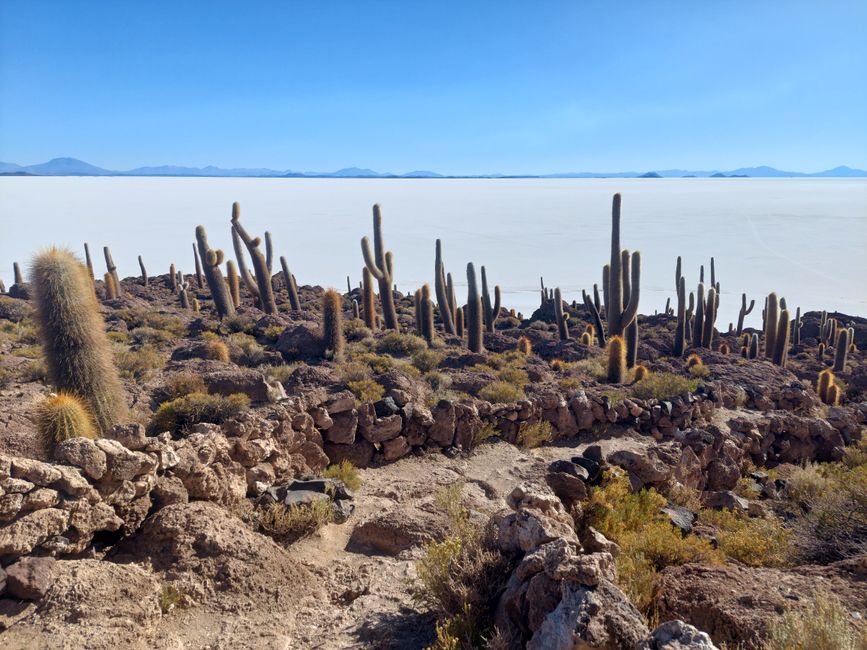
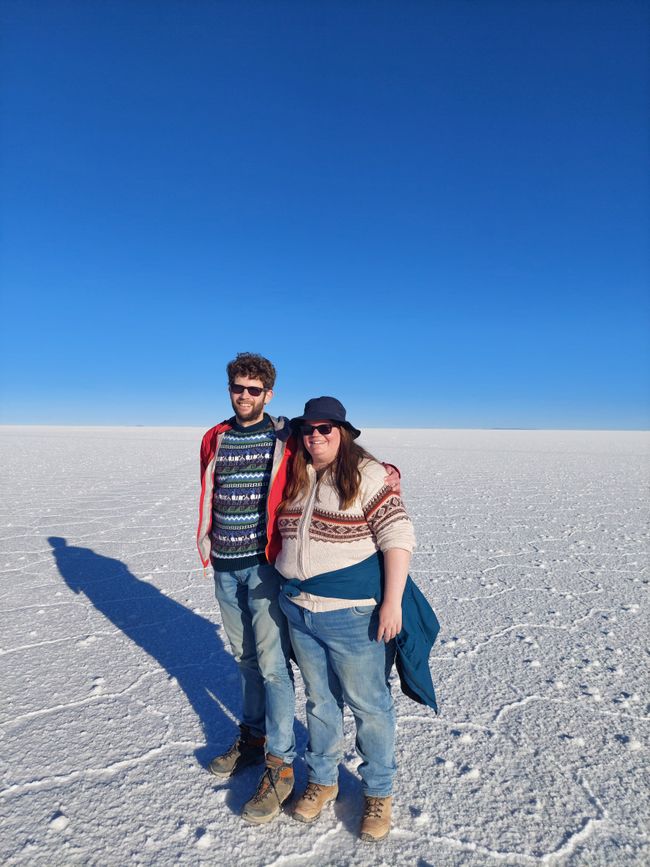
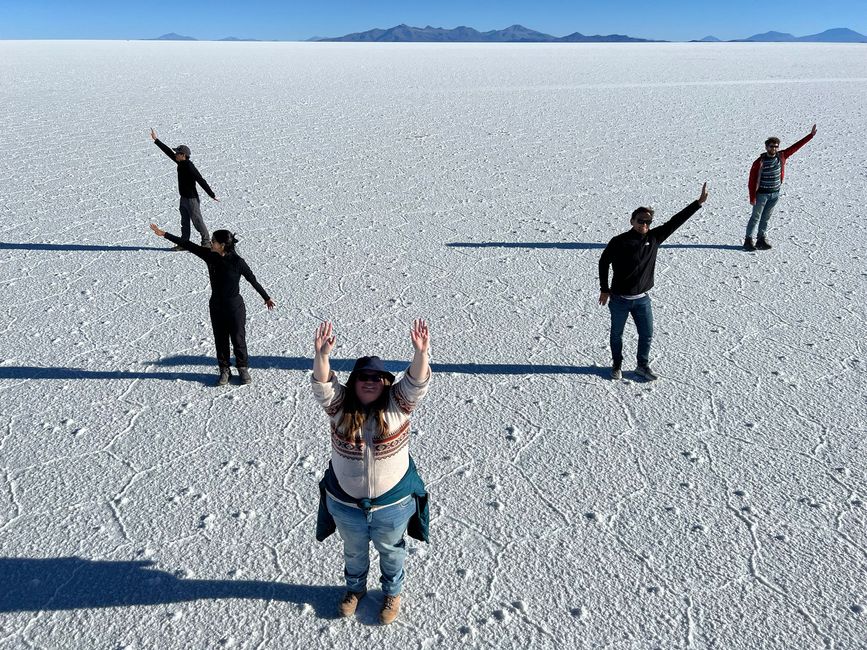
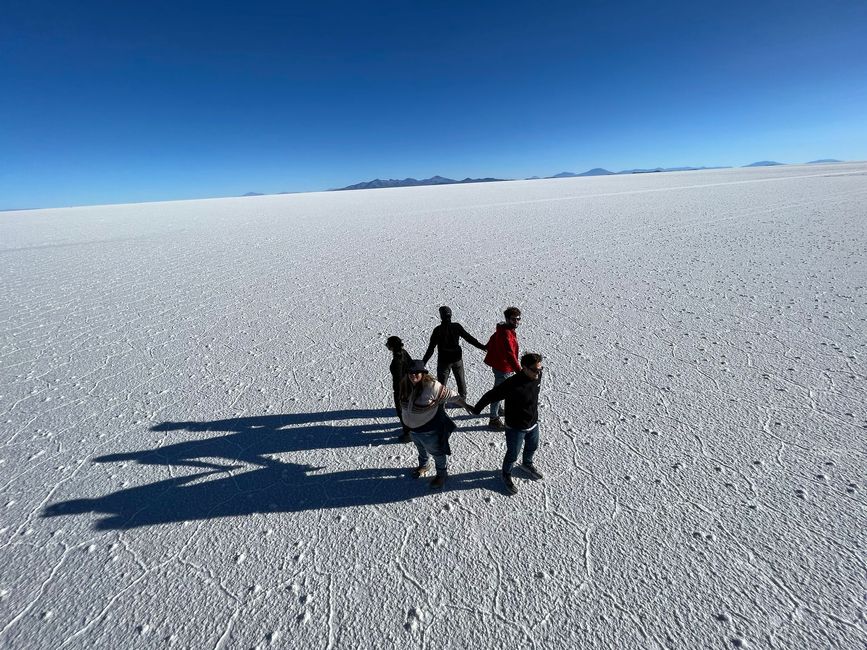
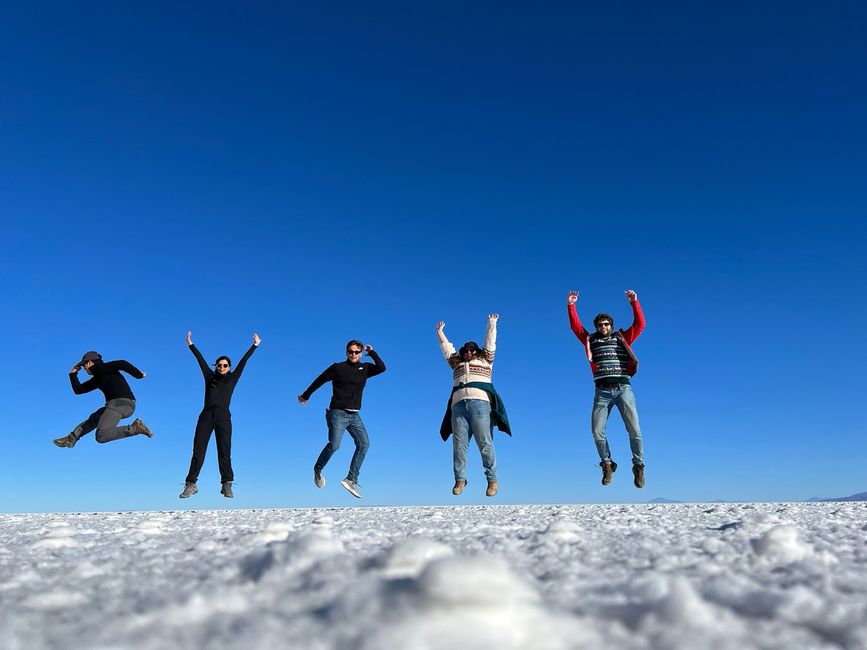
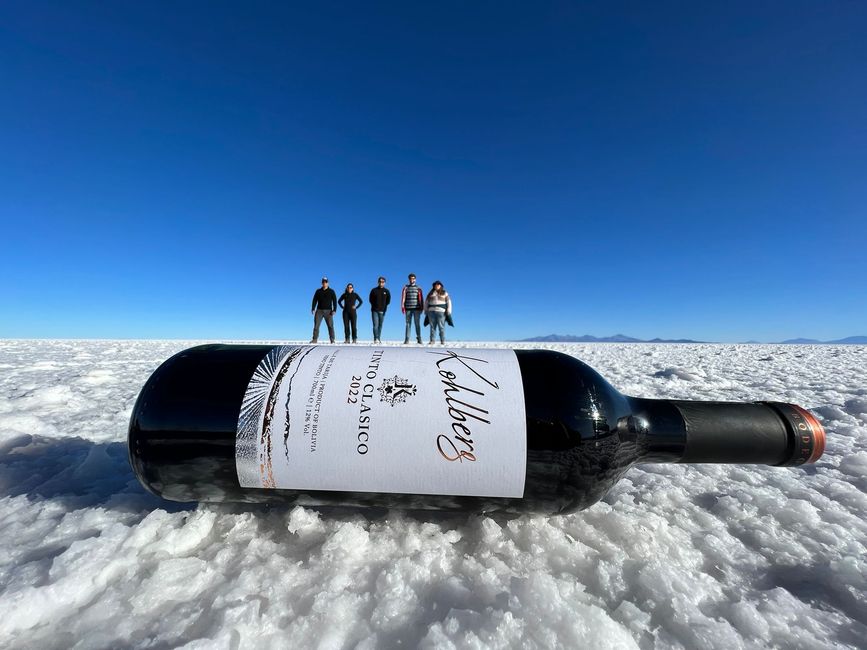
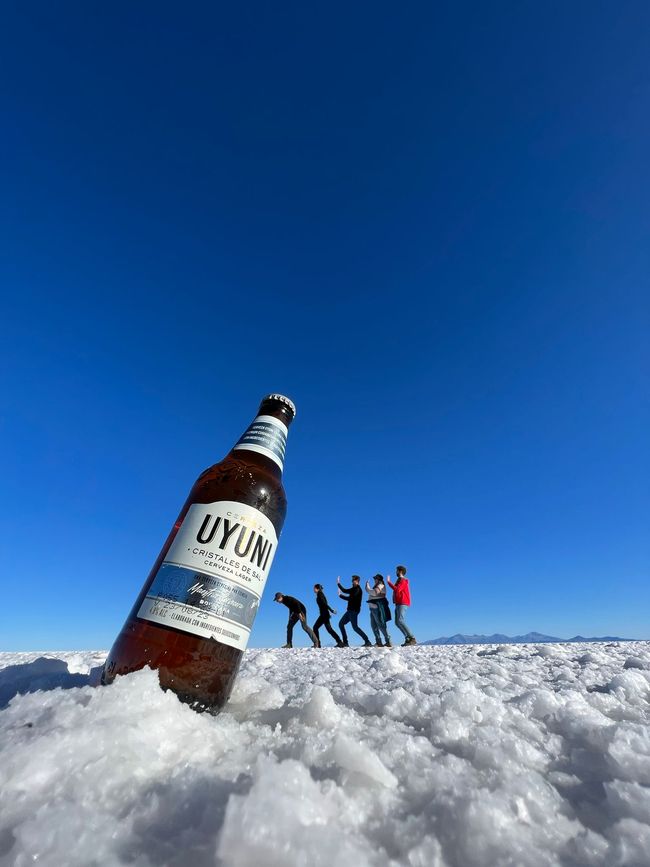
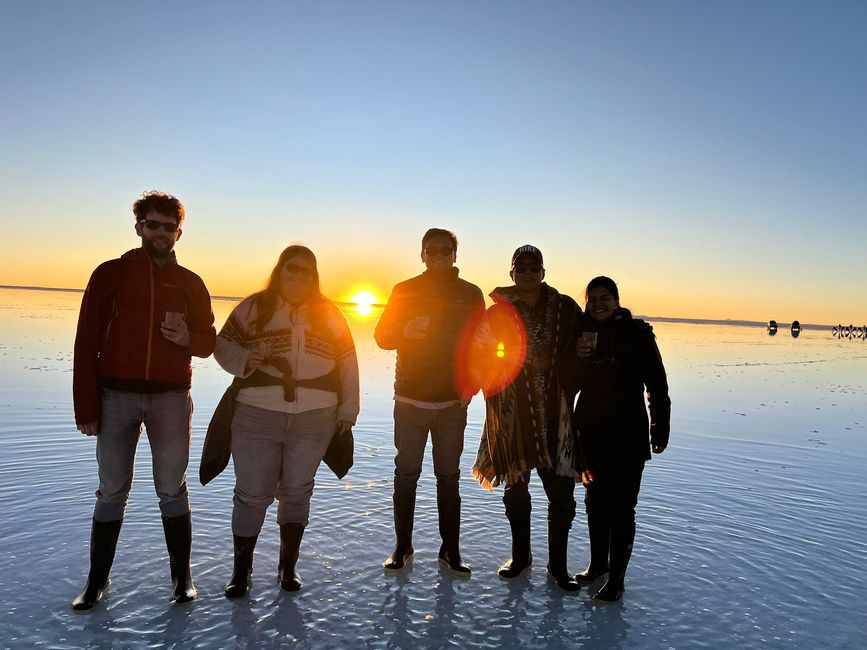
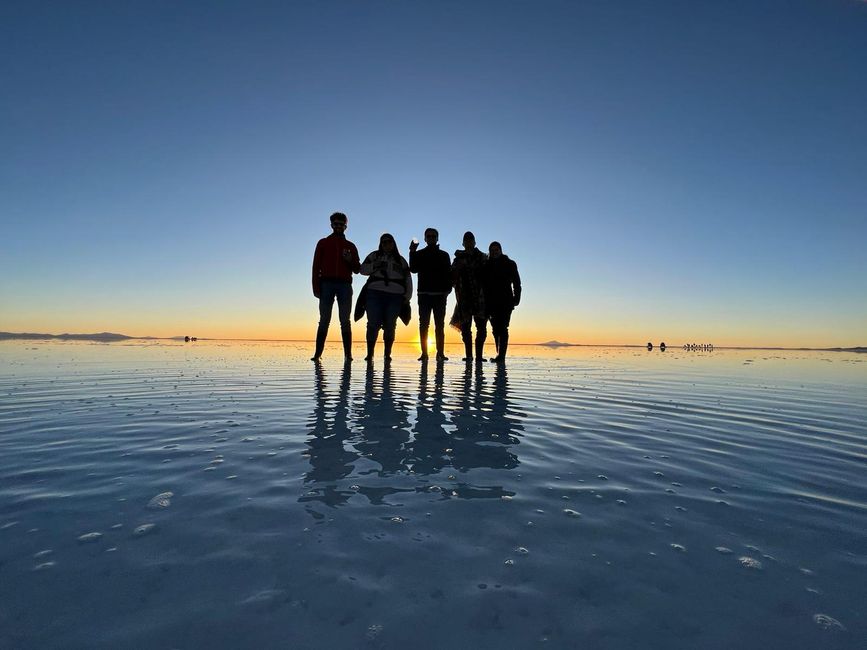
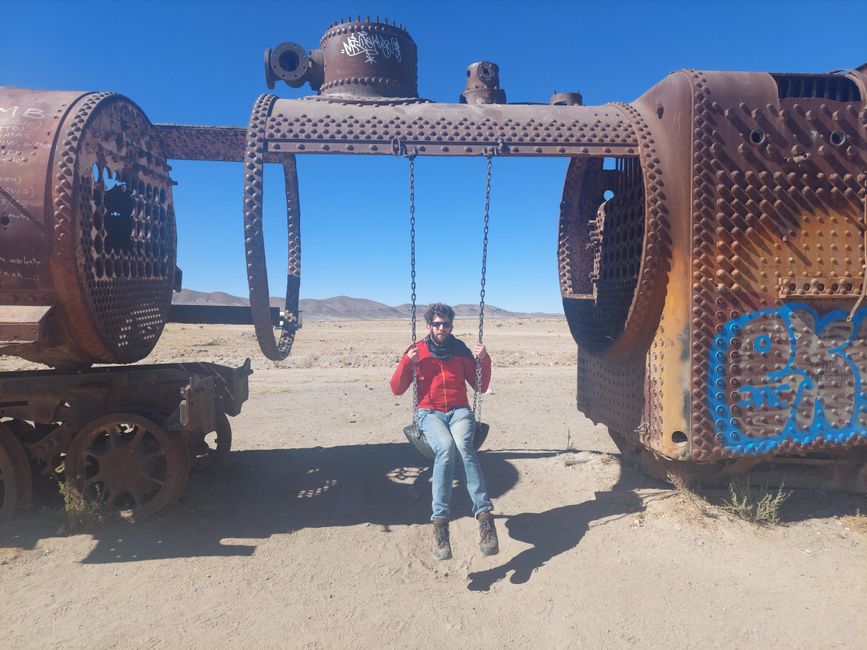
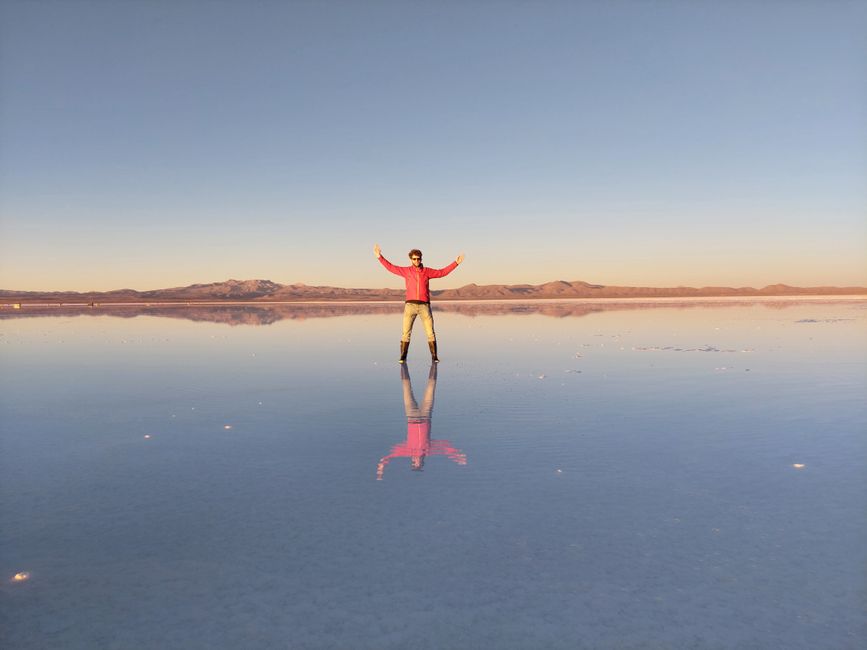
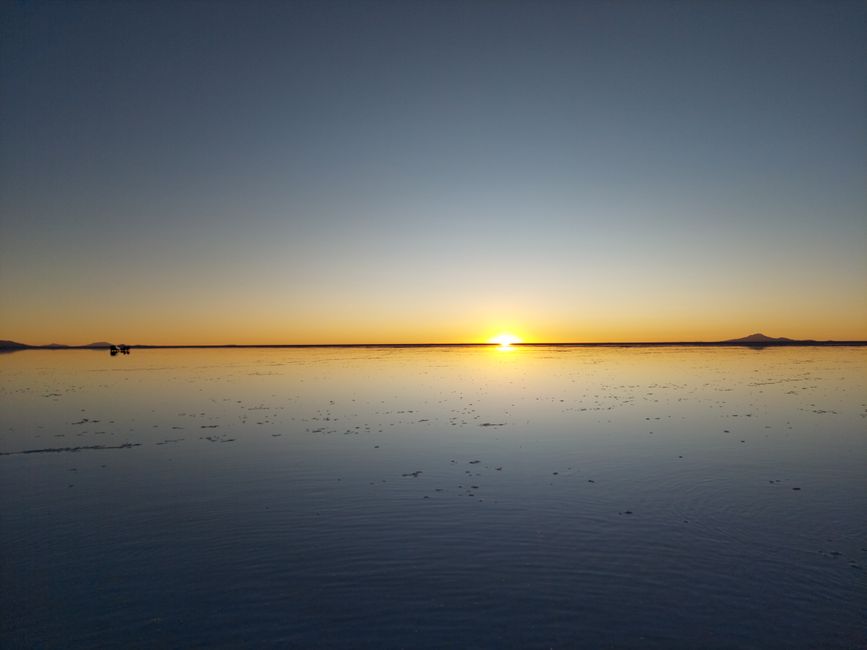
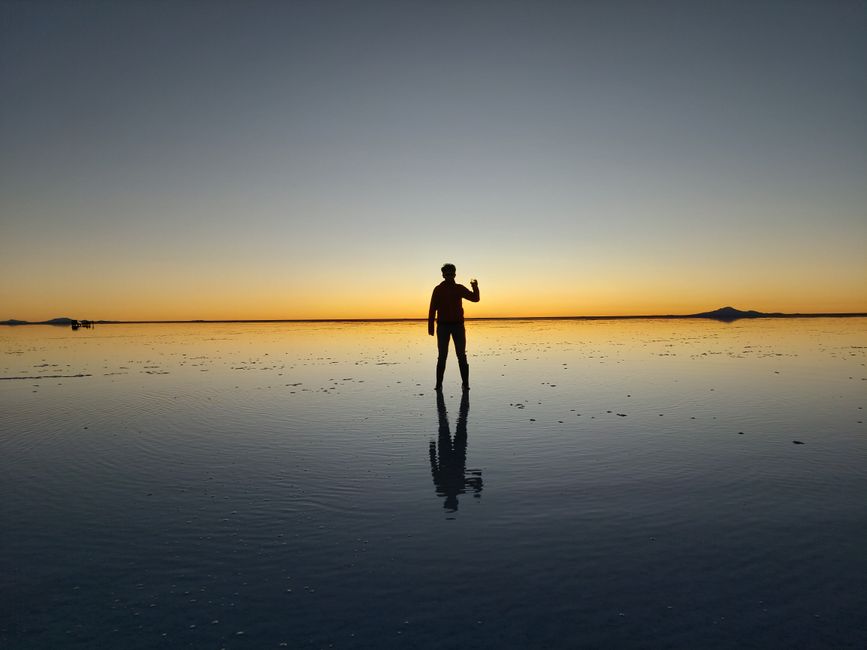
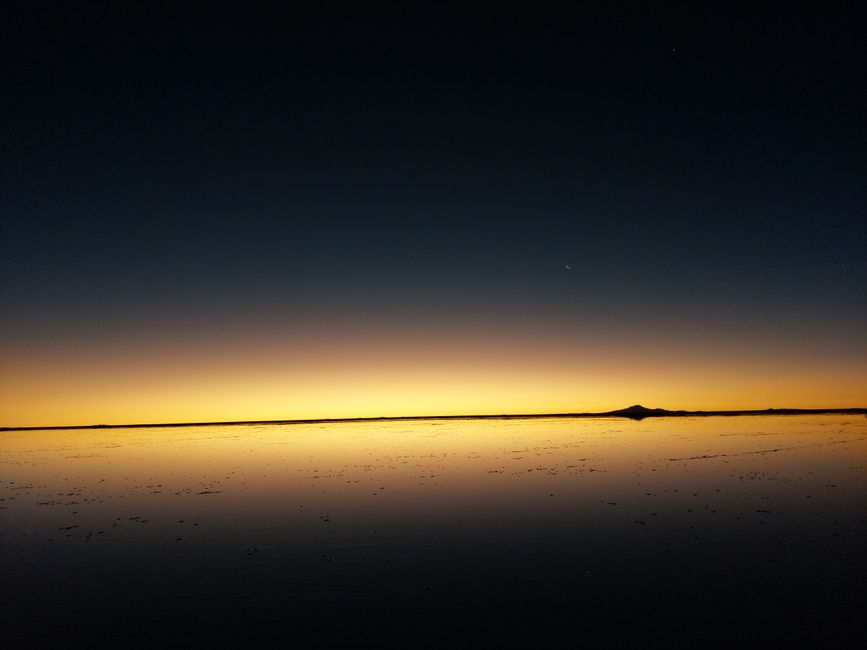
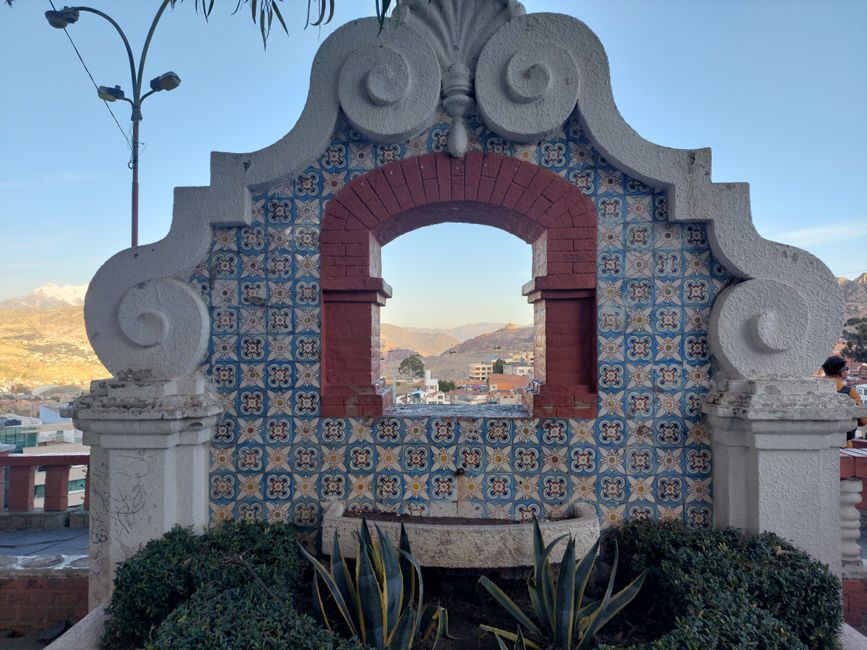
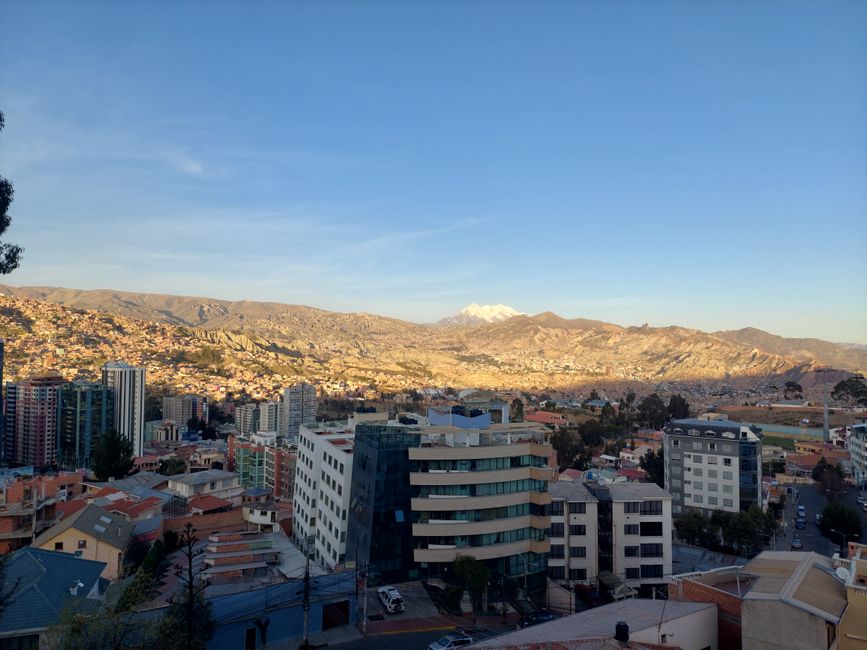
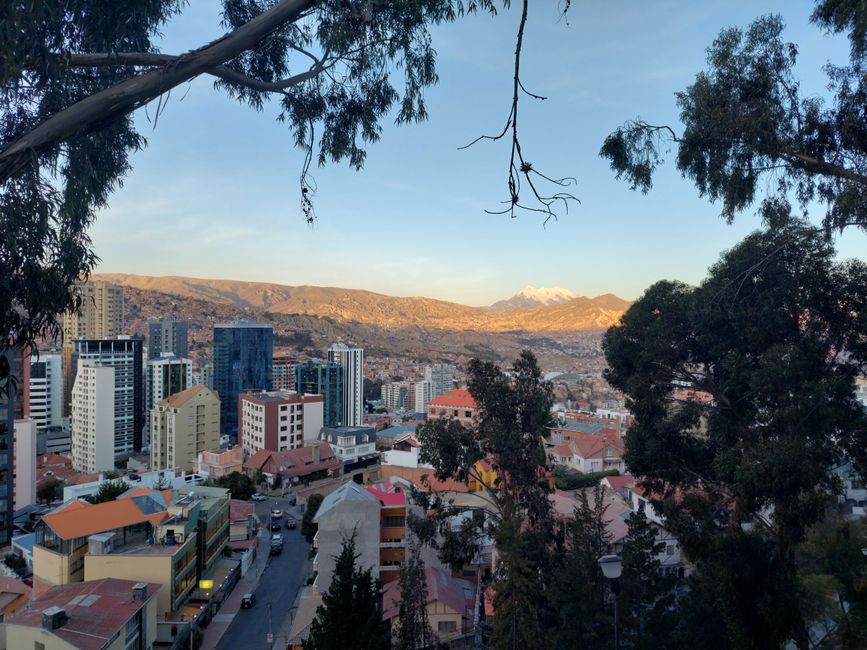
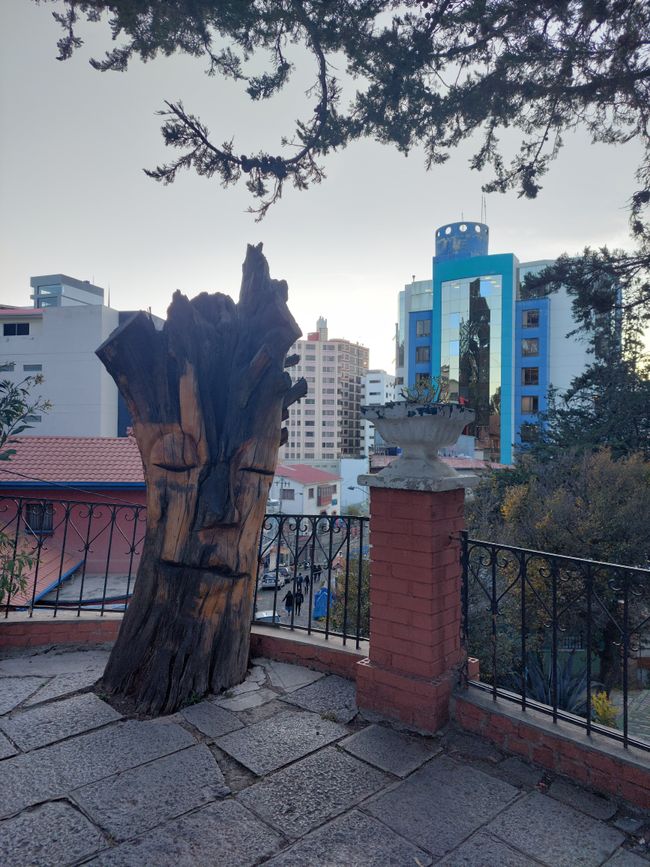
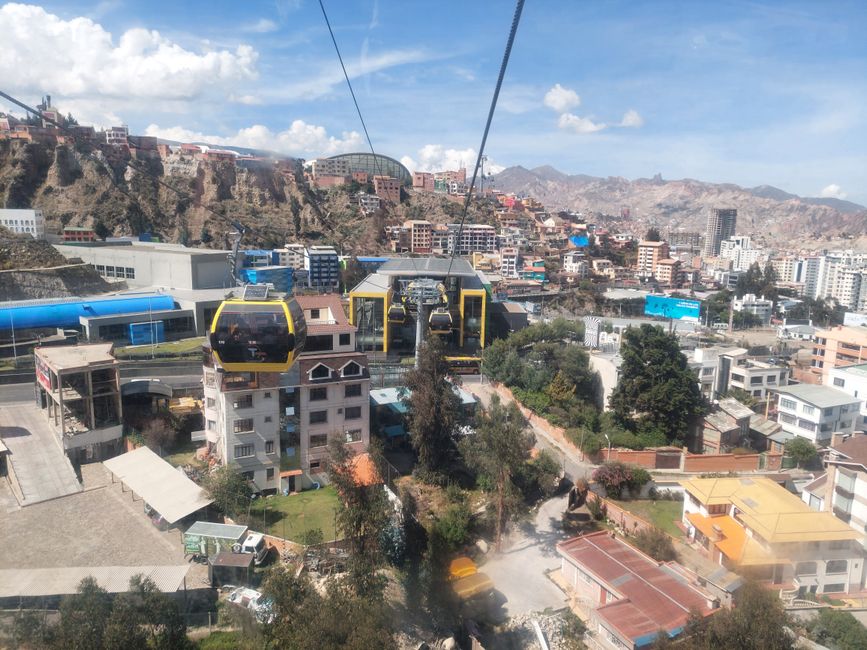
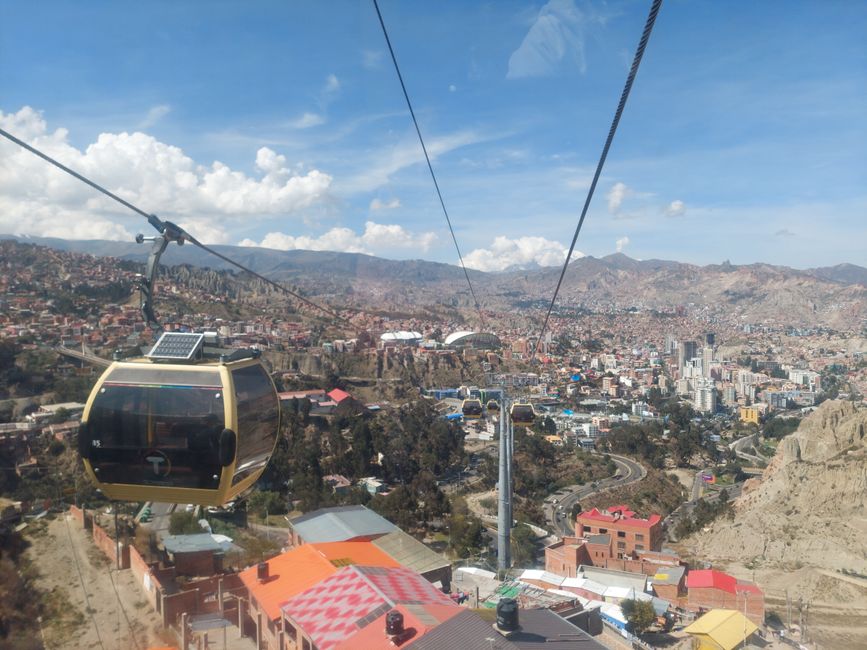
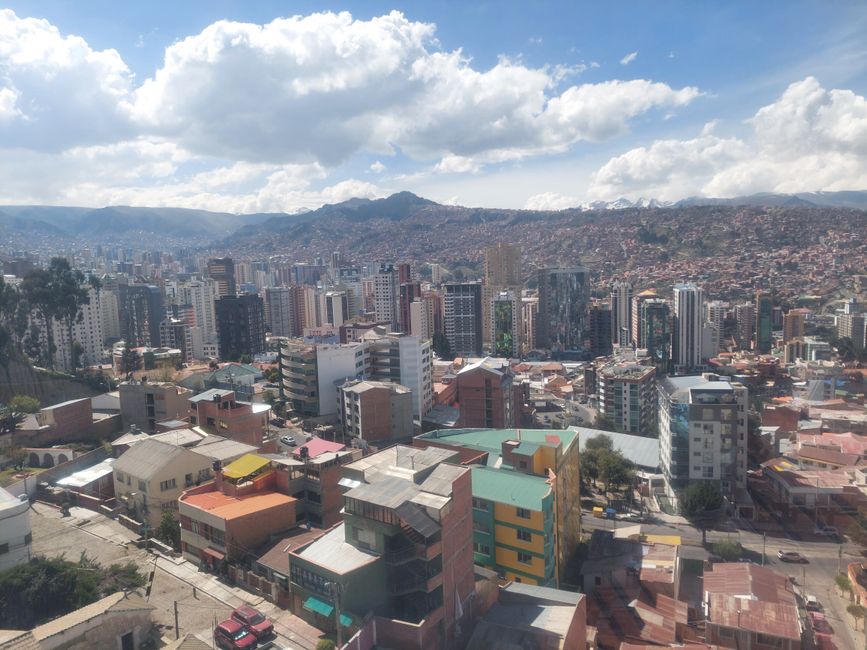
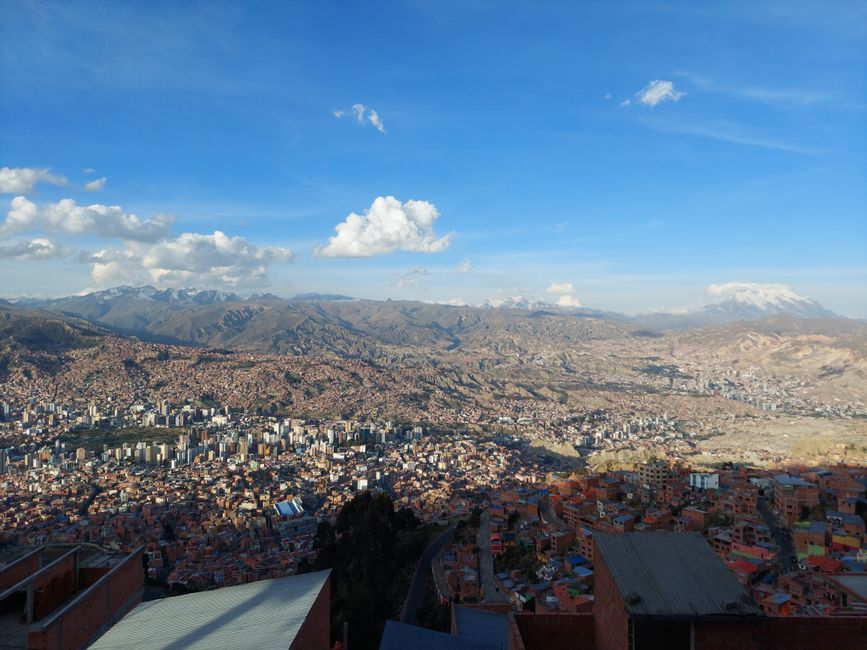
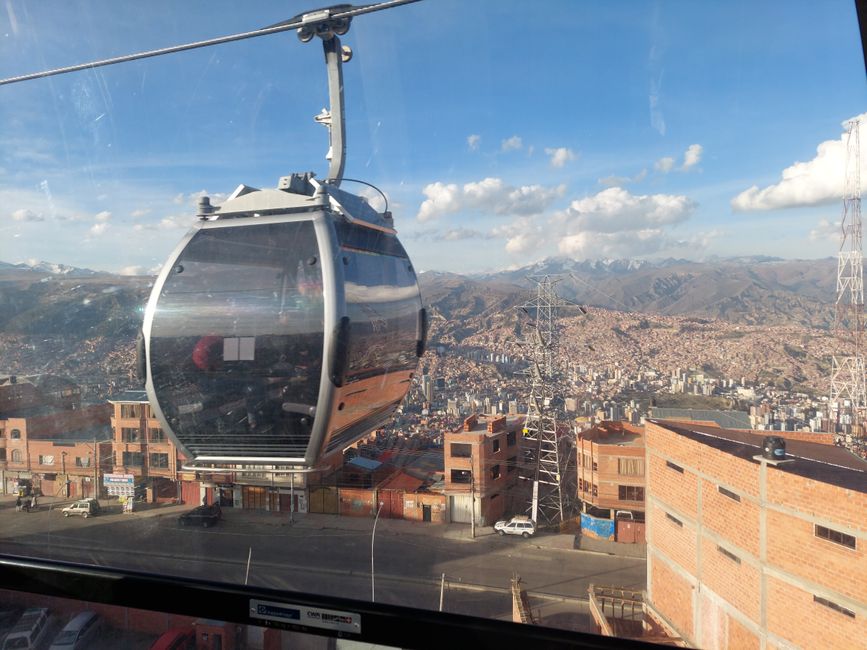
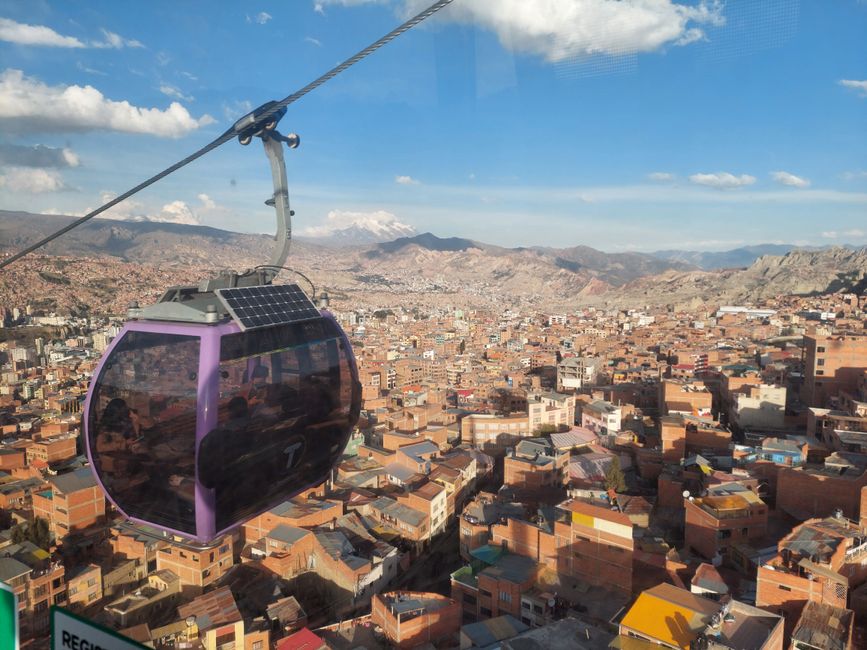
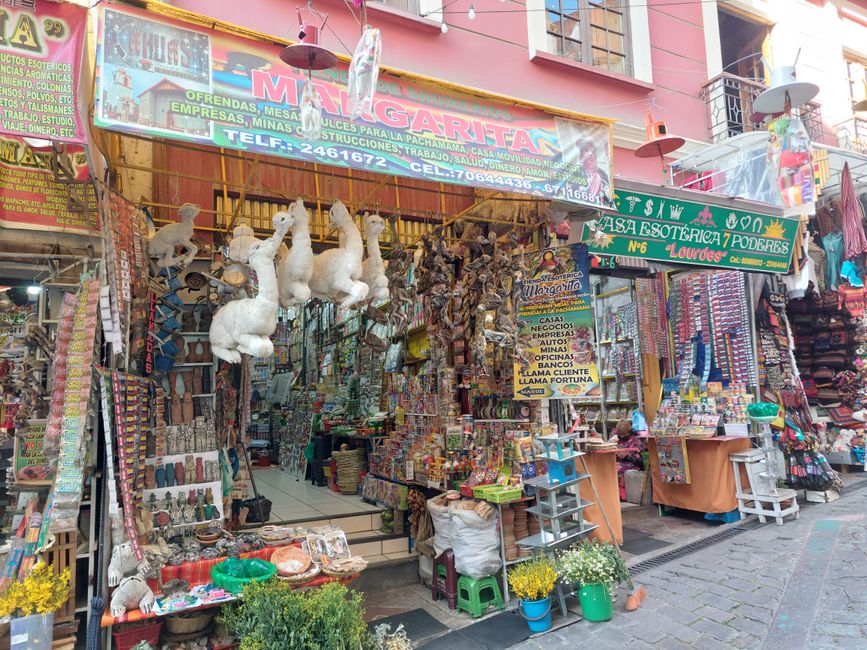
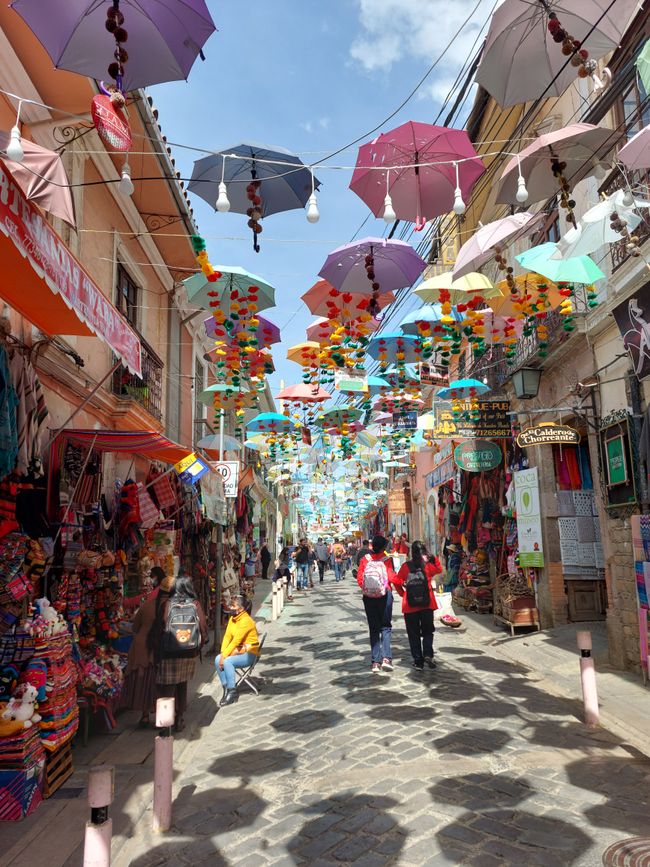
Wɔ Nudɔdɔ na Nyadzɔdzɔgbalẽ
The bus ride out of the Atacama Desert to Bolivia was once again one of the more exhausting rides, even though it was not a night bus ride. In the buses, you can usually recline the seats very far back to sleep better. The problem, of course, especially during the day, is that you have to agree with the persons sitting behind you. During this ride, two very tired young men sat in front of us, who reclined their seats so far back that we hardly had any space. We actually wanted to sit upright, and the compromise solution that we all move our seats back a bit was only partially implemented by the overly tired ignorant people in front of us. It should be mentioned that we always have our hand luggage with us on the seats and that, of course, leaves less space for us, but it is often read that you should not store your hand luggage in the storage compartments above the seats to protect against theft. Apparently, the sleepy selfish people in front of us had not heard of that, and every time we re-entered the bus, we had to discuss the seating positions again. We actually had to get on and off several times because we were crossing the Bolivian border. In contrast to the last, comparatively comfortable border crossing to Chile, this time we had to take our luggage out ourselves and wait there for a long time. It took us over two hours to cross the border. In Bolivia, there was then another significant drop in travel comfort. The road we were probably driving on could no longer be recognized as a road, because, on the one hand, it was no longer paved and, moreover, there was so much dust in the air that you could often hardly see anything. Everything was shaking, and someone had to open and close a window at the right times to keep the air in the bus relatively clean.
So we finally arrived in Uyuni a bit exhausted and walked on foot with our dusty luggage through the small city to our accommodation. Uyuni is located at an altitude of over 3600 m, which is lower than the destinations of some of our day trips in the Atacama Desert, where we gradually increased in altitude, but higher than San Pedro de Atacama, where we spent most of our time. So now we were taking a sensible next step to cope with staying at higher altitudes for a longer time. After all, at high altitudes, not only Sebastian's morning sun salute and even simpler movements suddenly become much more exhausting, but after a few hours, symptoms of altitude sickness can also occur, which usually subside, but very rarely can be life-threatening, and you cannot say in advance how strongly you will be affected. However, we were already quite used to higher altitudes, and after some time after arriving in Uyuni, we only had headaches, which we managed quite well with ibuprofen, and we took it very slowly on the day of arrival.
We chose Uyuni as our next destination because the neighboring Salar de Uyuni, the largest salt flat in the world, is Bolivia's most impressive tourist attraction. However, many tourists do not stay in this city (which actually doesn't offer much), but take part in an organized small-group tour through the Salar and adjacent areas that starts in Uyuni or even in San Pedro de Atacama and ends (again) in Uyuni, from where they then travel to the next destination. We decided against such a tour for several reasons: Firstly, if you suffer from altitude sickness at the beginning, you either have to go through everything at the prescribed pace while feeling sick, or you have to interrupt the tour and partially ruin it for the other participants. That would have been a horror scenario for us. In addition, the overnight accommodations are cold and often only moderately equipped, and apart from night bus rides, we always want to have enough sleeping comfort. Moreover, in this area, we might have been unreachable by phone for several days in a row, and especially now, this would not have been what we wanted regarding news from Judith's father. Another point is that Sebastian's MS medication supplies must be kept cool continuously - a solution would have had to be found, especially if it had not been a round trip. All of this was not worth a multi-day tour to us, especially since there are also one-day tours of the Salar, where you can see everything important, and the multi-day tours only lead to landscapes that we had already seen on the one-day tours from San Pedro de Atacama.
So we decided to book a day trip to the Salar de Uyuni in Uyuni, but even then, one should be cautious. There are dozens of tour operators in this small town, and accidents frequently occur on tours, for example, due to poorly maintained vehicles. Therefore, on our first full day in Uyuni, we took the time to find a well-rated operator (we chose Salty Desert Aventours) and book with them for the next day. Then we wanted to look for and book a bus to our next destination, which was not that easy. Here, too, we had safety concerns. There are better and worse bus companies everywhere in South America, but Bolivia seems to be different from our previous countries. The German Foreign Office advises that you should only travel with 'well-known bus companies,' whatever they are. Some time ago, a law was passed here that prohibits bus drivers from drinking alcohol at work; but because the bus drivers then went on strike, it was withdrawn. And if you google 'bus accidents Bolivia,' you would most likely want to fly away. So we looked for good bus companies and found that none of them went where we wanted to go next - namely to Potosí, which was a stopover on the way to Sucre, from where we wanted to continue to La Paz. However, we also considered that, given the condition of Judith's father, it would be better to be able to fly home quickly if necessary. Finally, we changed our plans and booked a trip to La Paz directly after our tour in the Salar de Uyuni the next day with a very well-rated bus company (Todo Turismo), which only offered night rides. We also shortened the original booking at our accommodation by one night - the owner seemed to have been surprised already during check-in that we wanted to stay in this city for three nights.
Otherwise, on this day of organization, we continued walking through Uyuni and took care of some things. We bought a Bolivian SIM card for 10 euros and a new lotion especially for Sebastian's dry skin, which is even drier at higher altitudes (we have found the good old Nivea Soft Cream everywhere in the world so far). We couldn't pay with a card everywhere in Uyuni, but sometimes we could, and the characteristic feature of Bolivian card payment terminals seems to be that the digits for entering the PIN are seemingly arranged randomly on touchscreens every time. A sensible approach, because PIN entries on touchscreens are always problematic due to the remaining fingerprints, but in the first moment, it was somewhat shocking because the automatism of always pressing the buttons in the same positions suddenly no longer worked. Uyuni is really not a beautiful city, but it was still interesting to observe further differences compared to the previous, wealthier countries. We didn't see any traffic lights anywhere, and it was even more difficult than elsewhere to cross an intersection. Traffic problems here are more likely to be bypassed by preventive honking or not bypassed at all. And while we had searched in vain for street food in Argentina and Chile, here we saw (and smelled) grills set up on the side of the road, on which tons of meat were being prepared. However, it didn't actually look very appetizing, and for hygienic reasons, such stands are also not recommended. Instead, on that evening, we went to a surprisingly hip restaurant in Uyuni, where we had a highly recommended 5-course surprise menu for little money, which was supposed to reinterpret traditional Bolivian food. This food was delicious and healthy, and in Bolivian cities, it is perhaps generally quite possible to eat healthily if you want. Finally, regarding the country's culture, it should be mentioned that toilet seats in Bolivia are often made of rubber and sometimes make a funny sound when you sit on them.
The next day, we had the day trip to the Salar de Uyuni, which exceeded our high expectations. We spent the excursion day with a South African living in Australia and a Colombian couple, who were all very nice and with whom we had a lot of fun. Our guide (also the driver) brought our multinational travel group to various stations in a jeep: First, still in Uyuni, to the only attraction of the city, namely the railway cemetery, where you can climb old wagons and have yourself photographed in front of animal and transformer statues made of scrap metal. At the next station, we were taken on a tour of a company that processes salt from the Salar, where we learned, for example, about the layer structure of this salt and saw a salt grinder and salt sculptures. We had to wait here a bit longer for the guide before we continued because we probably should have bought some salt souvenirs in the shop. Then we went to the next stop at the Ojos del Salar. We already knew this term from the Atacama Desert, and here, too, there were several openings in the salt crust through which you could see water. In contrast to the other Ojos del Salar, the water here bubbled a bit, and it was not freshwater that had come up from further below, but the brine that occurs directly below the salt crust.
After that, we drove further into the Salar. Soon, a continuously dazzling white salt flat stretched to the horizon, on which only traces were recognizable where many cars had already driven. Otherwise, the driver mainly followed the hills and islands on the horizon. Without our sunglasses, we wouldn't have been able to look out anymore. Along the way, the driver asked if anyone had music on their phone, but that was not the case. He then went to his own phone and left the steering wheel unattended for a longer period of time because there was no road he could have left. In fact, we never felt unsafe during the drive. Although many jeeps from numerous tour operators were on the desert simultaneously, apparently, all of them were well coordinated and spread out evenly. As we drove over the empty salt flat accompanied by the lively pop music of the driver and interspersed advertisements for Spotify Premium, we wondered how fast we would be, because there were no reference points on the plain, and the speedometer of our car remained at zero the whole time (that was definitely wrong). However, we were able to determine a speed of just under 120 km/h with our phone. Even the Dakar Rally took place in the Salar de Uyuni a few years ago, as reminded by a monument at our next stop. Behind the monument, there was a former salt hotel, where the walls are made of salt, where we had our lunch. After lunch, we drove to Isla Incahuasi, one of the islands in the desert (or in the dried-up salt lake from which the Salar was formed). The island consists of a hill with many tall cacti, from which you have great views of the salt flat. We climbed to the top with a 360° view, and unlike mountain hikes we know, we had to make sure not to try to hold onto trees because the trees in this case were cacti. For this, it was good that we had put on our hiking shoes. We had enough time to come back down on time, so we could continue and pursue our next plan, which was to take as many original photos of each other as possible. This is popular in the Salar de Uyuni and can be done in many different ways: Depending on the season, if the salt flat is covered with water on a large scale during the rainy season, you can take photos with reflection effects, and if the salt flat is dry, you can take photos with perspective effects. We were there at the right season because the water from the last rainy season in March had not completely evaporated yet and had moved to one corner of the salt flat due to wind and slope, so we could use all the possibilities depending on which corner we went to.
So, as the first thing, we drove to some dry spot in the salt flat where there was nothing else nearby. There we could take funny photos and videos that play with perspective by taking advantage of the fact that, due to the lack of landscape reference points, distances cannot be estimated on the 2D images afterwards. In this way, you can simply increase and decrease the apparent size of people and objects. Often, dinosaur figures are used for this purpose, which can be purchased for this purpose in shops in the area. But our guide had brought a bottle of wine, and someone else from our group had a beer bottle, which we positioned in the foreground of our photos. Our own gadgets (remaining cups from La Serena and Judith's asthma spray) didn't have to be used. Finally, the guide made a time-lapse video while driving around us several times with his car, and we, standing next to each other, took various prearranged positions on his command. Uno, dos, tres... This order remained the same - fortunately, because Sebastian, who is naturally challenged by quickly learning new movements, has experienced much more difficult task assignments in some sports courses. The video that resulted in the end actually looked pretty cool.
Afterwards, we drove to the part of the desert covered in water and put on rubber boots that the guide had brought for us. Now we saw a huge water surface to the horizon and could admire and photograph all sorts of reflections: reflections of ourselves, of each other, of the numerous participants and cars from other travel groups, and of the sun, which now, as if all of this were not impressive enough, set and slowly merged with the water surface. So, once again, it required a breathtaking setting, which, of course, also called for the consumption of a fitting drink or two. And so the time had come for our wine and beer bottles to fulfill their second and final purpose - and for both of us to cast aside our prophylactic abstinence from alcohol for higher altitudes.
We will not forget this completely successful day in the Salar de Uyuni so quickly. When we arrived back in Uyuni, it was already time to continue to La Paz. We had left our luggage with the provider of the Salar tour in the morning, so we could go directly to the bus company Todo Turismo from there. We were curious about the overnight journey because the reviews were so good. As we quickly noticed, this company has apparently recognized the niche that tourists in this less safe and comfortable country still want a high level of travel comfort (and maybe exaggerated a bit). Instead of relying on people getting on in between and selling sandwiches or sweets, warm food like on an airplane was provided at the very beginning, which had probably still been prepared in an office in Uyuni. And that was definitely tastier than on the plane. On the other hand, the meditative pan flute music played in the first few minutes of the journey against the background of the rattling road noise resulted in a rather curious soundscape. The road to La Paz was indeed paved, but a smooth road surface is something else. So despite all efforts, this was not the best night bus ride of our trip because parts of the bus were constantly rattling, and the blue interior lighting was on the whole time. Accordingly, we had to recover in our hotel in La Paz after being lucky to check into our room quite early.
La Paz is neither the constitutional capital nor the largest city in Bolivia, but the highest capital city in the world. We were still at an altitude of about 3600 m. Since Uyuni, we had been on the Altiplano, a large high plateau in the Andes that extends to Peru. More precisely, La Paz is located in a valley in the Altiplano that is 'only' 400 m deep, and outside of this valley is the neighboring (and less safe) city of El Alto, which used to belong to La Paz. The large differences in altitude within this metropolitan area repeatedly offer spectacular views. As an important means of transportation, since a few years, instead of a subway, there is a cable car system with several stations and lines in these two cities, which of course can also be used to get great views of the valley and the surrounding hills. In the cable car stations and cabins, we experienced a mask requirement for the first time, which the staff actually continued to enforce. We can only speculate here - perhaps such means are still more relied upon here to reduce the dangers of Covid, as the Bolivian healthcare system is certainly relatively poor. During the pandemic, we personally always found the mask requirement very sensible and were rather annoyed by people who did not want to follow it. However, this time, compliance with the rule was much more demanding for us because breathing was already more difficult at this altitude anyway, especially since we also had to climb stairs in the stations, and unfortunately, we only had FFP2 masks in our luggage, although the disposable masks that most others wore would have been the better choice here. Otherwise, compared to a train compartment, there was a family-like atmosphere in the cable car cabins, as only eight people were allowed in each cabin, and whoever got on greeted the others friendly.
On the first day in La Paz, however, we didn't need a cable car yet to enjoy a beautiful view. As always, we had chosen a safe area to stay (the Sopocachi district), and while exploring this area on the first evening, we found the small Montículo Park nearby, which offered a wide view over the valley and was also emphasized as worth seeing in the travel guide. Back in the hotel room, we organized our breakfast for the next day. In the evening, we each received a WhatsApp message with a link where we could choose when and what we wanted to have for breakfast. There were some delicious options, the only problem was that Sebastian couldn't choose the same time as Judith, probably because there were already too many registrations for that time slot. Was that the point of it? Anyway, after writing to them on WhatsApp, they let us have breakfast together.
The next day, it became clear that Judith's father only had a few days left to live. Therefore, we immediately booked a flight home for the next night. We spent this last day just riding the cable car, strolling through the colorful markets in the center, and buying souvenirs and gifts. The hotel organized a taxi for us to the airport. By now, we were no longer as remote as in the desert, but as it turned out, you couldn't leave the continent by direct flight from La Paz/El Alto Airport. In total, we flew via Lima and Amsterdam to Zurich. Actually, we wanted to fly as little as possible and only directly, but in this special situation, there was no other option. While we were checking in at La Paz/El Alto, we received the news that Judith's father had passed away. Over 30 hours later, we were finally home.
Since then, we have been staying with Judith's mother in Villingen in the Black Forest and participating in everything that comes up here now. We have also continued to plan how we want to spend our remaining time off until the end of September. We don't want to go to South America again this year, so we have extended our planned stay in the USA to the maximum allowed time of 90 days according to the visa regulations and now want to drive from Seattle along the West Coast and then to the East Coast. It starts at the end of June, and before that, we will probably go to Provence with a camper. There is also enough time to order a new lens cap because Judith lost another one in the Atacama Desert.
Wɔ Nudɔdɔ na Nyadzɔdzɔgbalẽ
Ŋuɖoɖo

Mɔzɔzɔ ŋuti nyatakakawo Bolivia
